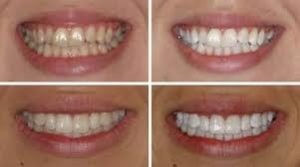Whitening
Tooth whitening, or dental bleaching, is a common procedure in general dentistry. As a rule of thumb, adults have darker teeth than children. The enamel color can be affected by one’s diet and oral hygiene. Children’s bright, shiny teeth are due to a lack of harmful substances such as tobacco, cigarettes, alcohol, and aerated beverages. The mineral structure of the enamel becomes less porous as people age. The whiteness of your teeth can be affected by antibiotics like Tetracycline.

Patients have many options when it comes to teeth whitening. In-office bleaching is the best method for teeth whitening. In-office bleaching involves the direct application of the whitening agent to the patient’s tooth. If necessary, heat/laser/special light can be used to complete the procedure. This process is faster and requires equipment that speeds up recovery. This method has one drawback: the patient might need to go to multiple appointments before they see the desired results.
Laser treatment can also be used to whiten teeth. It is possible to see results in as little as one sitting. Laser-enhanced bleaching is fast but not permanent. If the person smokes, drinks alcohol, or uses other harmful substances that can stain their skin, the whiteness of the procedure may fade within a month. If the individual is able not to smoke or engage in similar activities, whiteness can last for up to a year.
The individual’s lifestyle, stains, and teeth conditions must all be considered when choosing a teeth whitening treatment.
